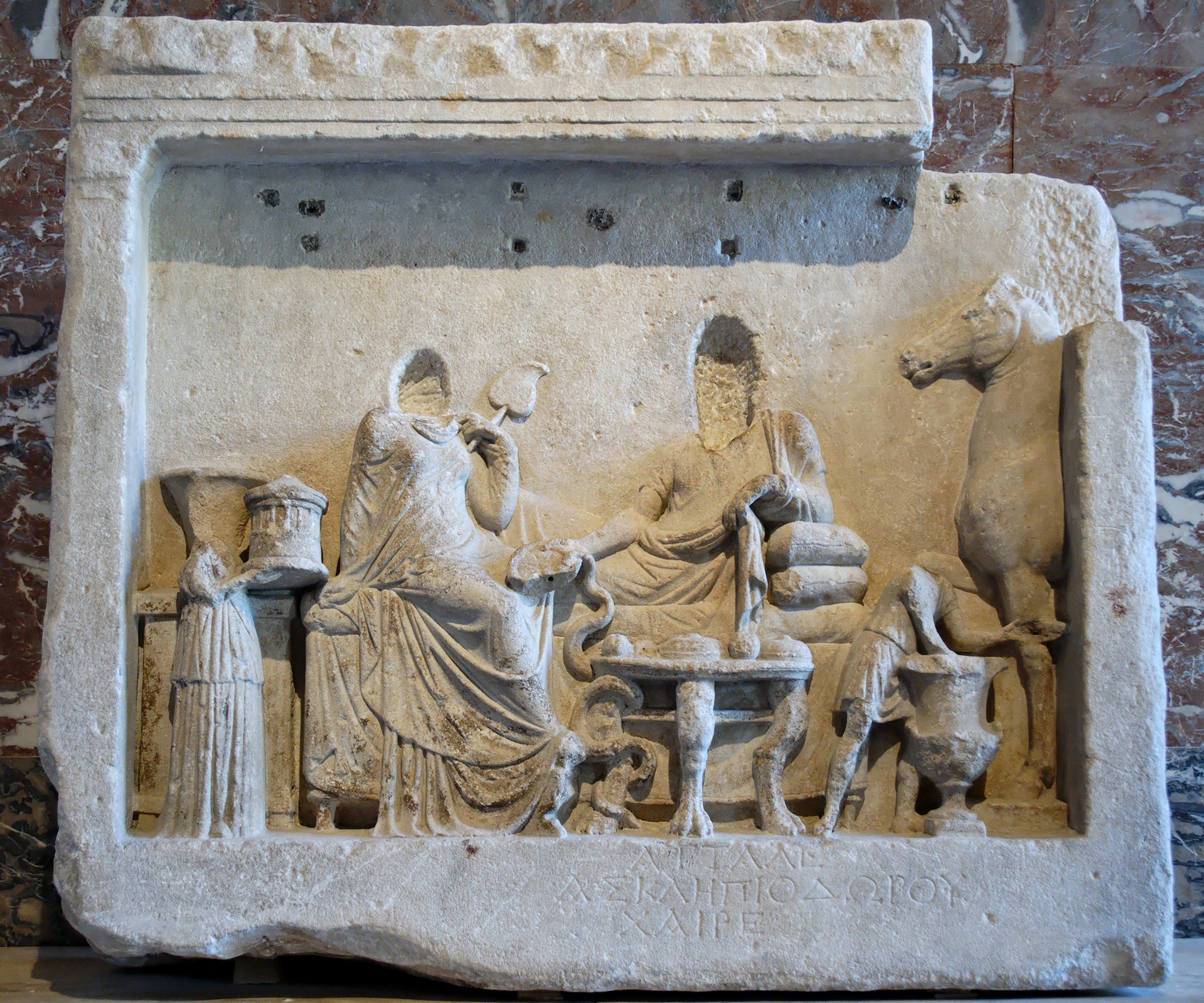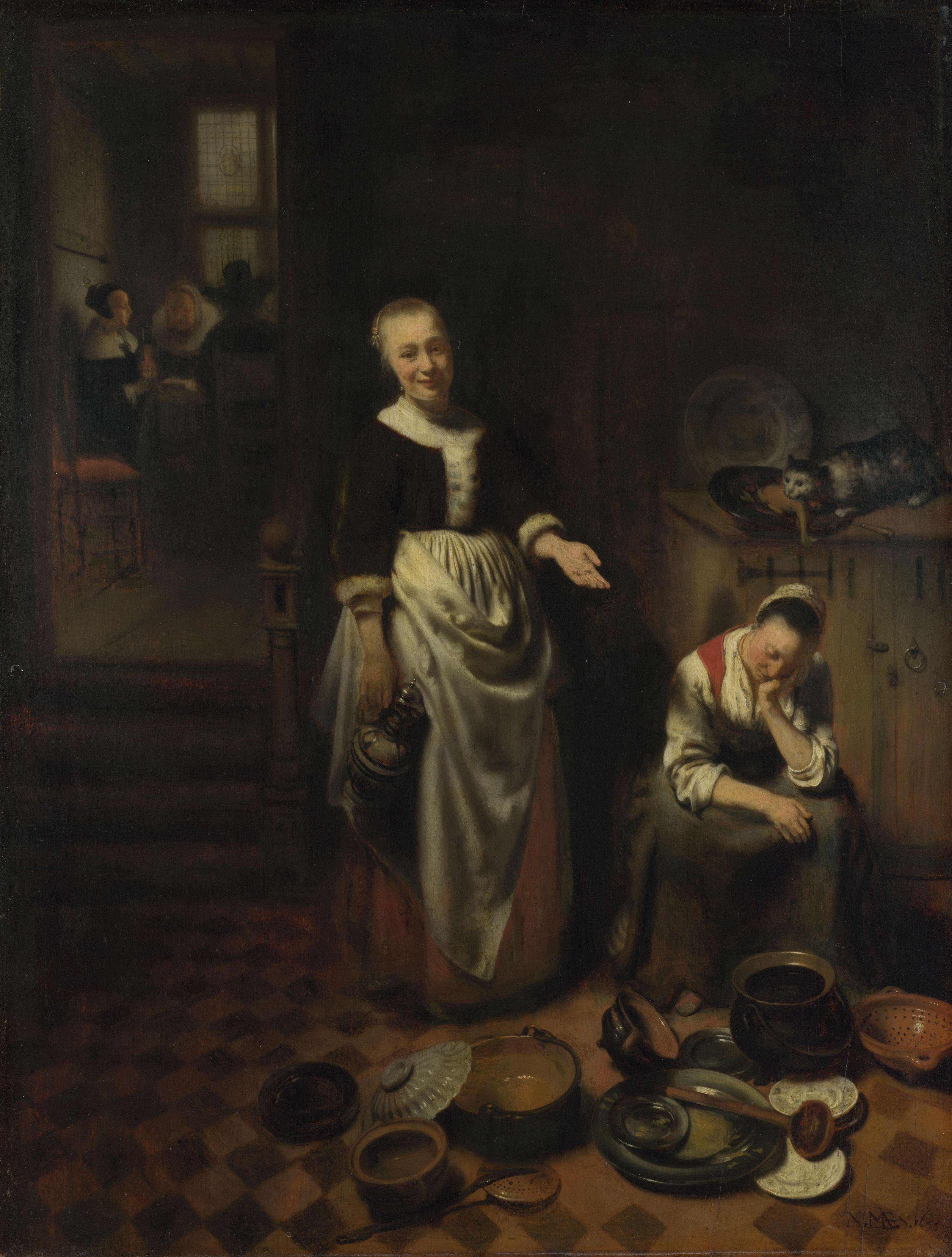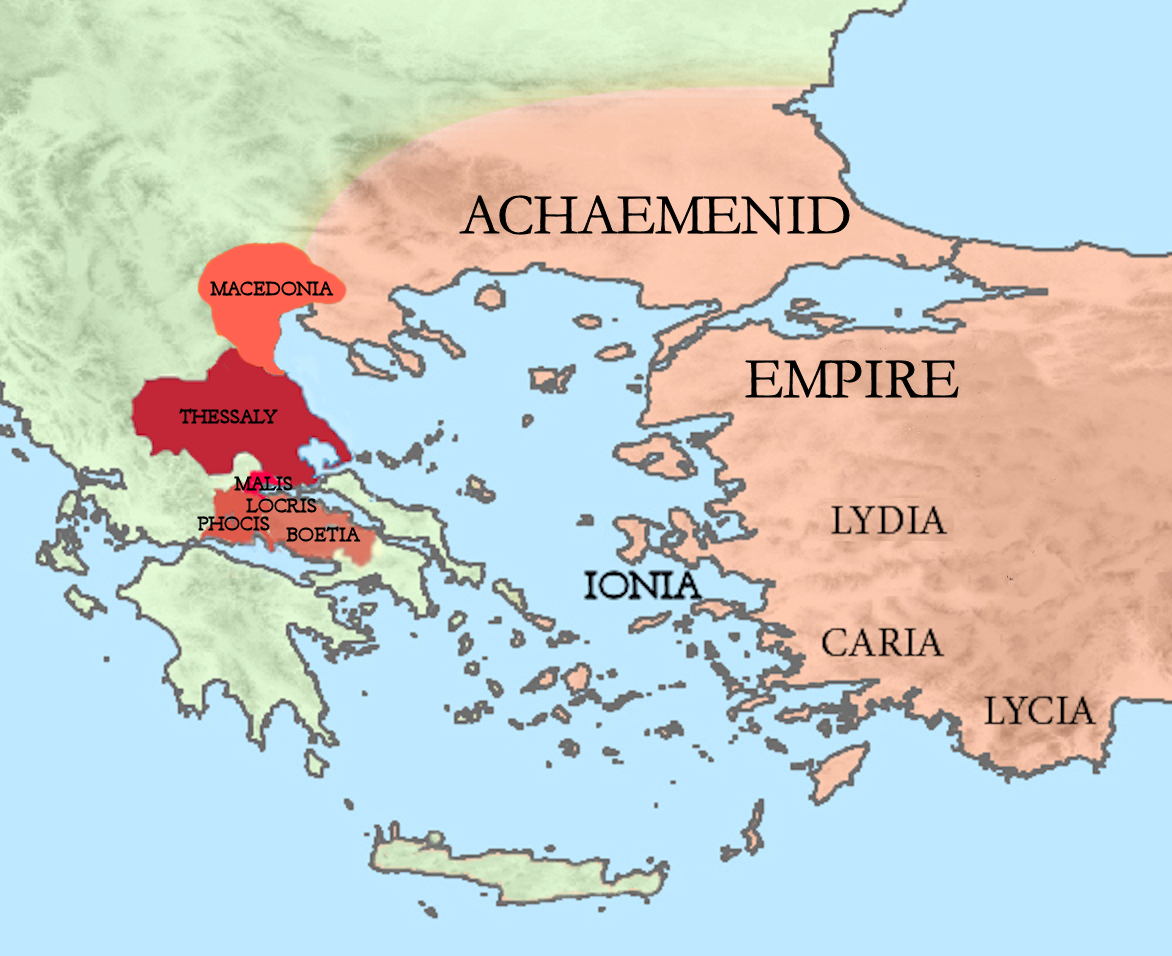|
Androcydes (painter)
Androcydes (or Androkydes) ( grc, Ἀνδροκύδης) of Cyzicus was a Greek painter of the 4th century BC, whose ''Battle of Plataea'' became involved in a political controversy. Plutarch's remarks concerning this work are of interest to art historians who study history painting as a genre. According to Plutarch, Androcydes received a commission from the city of Thebes to paint the battle scene on site. During this period (382–379 BC), the Theban oligarchy had allied with Sparta. When the Spartans were defeated in 379, the work remained unfinished. It was confiscated and dedicated to commemorate a minor skirmish at Plataea, probably in 370, before the Battle of Leuctra. Originally, the work was to have honored Pelopidas and Epaminondas, but through the efforts of a certain Menecleides, the name of the Theban commander Charon was substituted, either directly in the painting or on a separate dedicatory plaque. This repurposing indicates that battle scenes might be depicted so ... [...More Info...] [...Related Items...] OR: [Wikipedia] [Google] [Baidu] |
Cyzicus
Cyzicus (; grc, Κύζικος ''Kúzikos''; ota, آیدینجق, ''Aydıncıḳ'') was an ancient Greek town in Mysia in Anatolia in the current Balıkesir Province of Turkey. It was located on the shoreward side of the present Kapıdağ Peninsula (the classical Arctonnesus), a tombolo which is said to have originally been an island in the Sea of Marmara only to be connected to the mainland in historic times either by artificial means or an earthquake. The site of Cyzicus, located on the Erdek and Bandırma roads, is protected by Turkey's Ministry of Culture. History Ancient The city was said to have been founded by Pelasgians from Thessaly, according to tradition at the coming of the Argonauts; later it received many colonies from Miletus, allegedly in 756 BC, but its importance began near the end of the Peloponnesian War when the conflict centered on the sea routes connecting Greece to the Black Sea. At this time, the cities of Athens and Miletus diminished in impo ... [...More Info...] [...Related Items...] OR: [Wikipedia] [Google] [Baidu] |
Genre Works
Genre art is the pictorial representation in any of various media of scenes or events from everyday life, such as markets, domestic settings, interiors, parties, inn scenes, work, and street scenes. Such representations (also called genre works, genre scenes, or genre views) may be realistic, imagined, or romanticized by the artist. Some variations of the term ''genre art'' specify the medium or type of visual work, as in ''genre painting'', ''genre prints'', ''genre photographs'', and so on. The following concentrates on painting, but genre motifs were also extremely popular in many forms of the decorative arts, especially from the Rococo of the early 18th century onwards. Single figures or small groups decorated a huge variety of objects such as porcelain, furniture, wallpaper, and textiles. Genre painting ''Genre painting'', also called ''genre scene'' or ''petit genre'', depicts aspects of everyday life by portraying ordinary people engaged in common activities. One commo ... [...More Info...] [...Related Items...] OR: [Wikipedia] [Google] [Baidu] |
History Painters
History (derived ) is the systematic study and the documentation of the human activity. The time period of event before the invention of writing systems is considered prehistory. "History" is an umbrella term comprising past events as well as the memory, discovery, collection, organization, presentation, and interpretation of these events. Historians seek knowledge of the past using historical sources such as written documents, oral accounts, art and material artifacts, and ecological markers. History is not complete and still has debatable mysteries. History is also an academic discipline which uses narrative to describe, examine, question, and analyze past events, and investigate their patterns of cause and effect. Historians often debate which narrative best explains an event, as well as the significance of different causes and effects. Historians also debate the nature of history as an end in itself, as well as its usefulness to give perspective on the problems of the p ... [...More Info...] [...Related Items...] OR: [Wikipedia] [Google] [Baidu] |
Year Of Death Unknown
A year or annus is the orbital period of a planetary body, for example, the Earth, moving in its orbit around the Sun. Due to the Earth's axial tilt, the course of a year sees the passing of the seasons, marked by change in weather, the hours of daylight, and, consequently, vegetation and soil fertility. In temperate and subpolar regions around the planet, four seasons are generally recognized: spring, summer, autumn and winter. In tropical and subtropical regions, several geographical sectors do not present defined seasons; but in the seasonal tropics, the annual wet and dry seasons are recognized and tracked. A calendar year is an approximation of the number of days of the Earth's orbital period, as counted in a given calendar. The Gregorian calendar, or modern calendar, presents its calendar year to be either a common year of 365 days or a leap year of 366 days, as do the Julian calendars. For the Gregorian calendar, the average length of the calendar year ... [...More Info...] [...Related Items...] OR: [Wikipedia] [Google] [Baidu] |
Battle Of Plataea
The Battle of Plataea was the final land battle during the second Persian invasion of Greece. It took place in 479 BC near the city of Plataea in Boeotia, and was fought between an alliance of the Ancient Greece, Greek city-states (including Sparta, History of Athens, Athens, Corinth and Megara), and the Achaemenid Empire, Persian Empire of Xerxes I (allied with Greece's Boeotians, Thessalians, and Macedonia (ancient kingdom), Macedonians). The previous year the Persian invasion force, led by the Persian king in person, had scored victories at the battles of Battle of Thermopylae, Thermopylae and Battle of Artemisium, Artemisium and conquered Thessaly, Phocis, Boeotia, Euboea and Attica. However, at the ensuing Battle of Salamis, the allied Greek navy had won an unlikely but decisive victory, preventing the conquest of the Peloponnesus. Xerxes then retreated with much of his army, leaving his general Mardonius (nephew of Darius I), Mardonius to finish off the Greeks the followi ... [...More Info...] [...Related Items...] OR: [Wikipedia] [Google] [Baidu] |
Theban Hegemony
The Theban hegemony lasted from the Theban victory over the Spartans at Leuctra in 371 BC to their defeat of a coalition of Peloponnesian armies at Mantinea in 362 BC, though Thebes sought to maintain its position until finally eclipsed by the rising power of Macedon in 346 BC. Externally, the way was paved for Theban ascendancy by the collapse of Athenian power in the Peloponnesian War (431–404 BC), through the weakening of the Spartans by their oliganthropia (demographic decline) and by the inconclusive Corinthian War (395–386 BC). Internally, the Thebans enjoyed two temporary military advantages: #The leaders of the Theban oligarchy at the time, Epaminondas and Pelopidas, were fully committed to an aggressive foreign policy and could be relied on to win any battle and #The same leaders had instituted tactical improvements in the Theban heavy infantry (e.g. longer spears, the use of a wedge-shaped formation of spearmen), which had yet to catch on among their rivals ... [...More Info...] [...Related Items...] OR: [Wikipedia] [Google] [Baidu] |
People From Cyzicus
A person (plural, : people) is a being that has certain capacities or attributes such as reason, morality, consciousness or self-consciousness, and being a part of a culturally established form of social relations such as kinship, ownership of property, or legal obligation, legal responsibility. The defining features of personhood and, consequently, what makes a person count as a person, differ widely among cultures and contexts. In addition to the question of personhood, of what makes a being count as a person to begin with, there are further questions about personal identity and self: both about what makes any particular person that particular person instead of another, and about what makes a person at one time the same person as they were or will be at another time despite any intervening changes. The plural form "people" is often used to refer to an entire nation or ethnic group (as in "a people"), and this was the original meaning of the word; it subsequently acquired its us ... [...More Info...] [...Related Items...] OR: [Wikipedia] [Google] [Baidu] |
4th-century BC Greek People
The 4th century (per the Julian calendar and Anno Domini/ Common era) was the time period which lasted from 301 ( CCCI) through 400 ( CD). In the West, the early part of the century was shaped by Constantine the Great, who became the first Roman emperor to adopt Christianity. Gaining sole reign of the empire, he is also noted for re-establishing a single imperial capital, choosing the site of ancient Byzantium in 330 (over the current capitals, which had effectively been changed by Diocletian's reforms to Milan in the West, and Nicomedeia in the East) to build the city soon called Nova Roma (New Rome); it was later renamed Constantinople in his honor. The last emperor to control both the eastern and western halves of the empire was Theodosius I. As the century progressed after his death, it became increasingly apparent that the empire had changed in many ways since the time of Augustus. The two emperor system originally established by Diocletian in the previous century fe ... [...More Info...] [...Related Items...] OR: [Wikipedia] [Google] [Baidu] |
Ancient Greek Painters
Ancient history is a time period from the beginning of writing and recorded human history to as far as late antiquity. The span of recorded history is roughly 5,000 years, beginning with the Sumerian cuneiform script. Ancient history covers all continents inhabited by humans in the period 3000 BCAD 500. The three-age system periodizes ancient history into the Stone Age, the Bronze Age, and the Iron Age, with recorded history generally considered to begin with the Bronze Age. The start and end of the three ages varies between world regions. In many regions the Bronze Age is generally considered to begin a few centuries prior to 3000 BC, while the end of the Iron Age varies from the early first millennium BC in some regions to the late first millennium AD in others. During the time period of ancient history, the world population was already exponentially increasing due to the Neolithic Revolution, which was in full progress. While in 10,000 BC, the world population stood ... [...More Info...] [...Related Items...] OR: [Wikipedia] [Google] [Baidu] |
Scylla
In Greek mythology, Scylla), is obsolete. ( ; grc-gre, Σκύλλα, Skúlla, ) is a legendary monster who lives on one side of a narrow channel of water, opposite her counterpart Charybdis. The two sides of the strait are within an arrow's range of each other—so close that sailors attempting to avoid Charybdis would pass dangerously close to Scylla and vice versa. Scylla is first attested in Homer's ''Odyssey'', where Odysseus and his crew encounter her and Charybdis on their travels. Later myth provides an origin story as a beautiful nymph who gets turned into a monster. Book Three of Virgil's ''Aeneid'' associates the strait where Scylla dwells with the Strait of Messina between Calabria, a region of Southern Italy, and Sicily. The coastal town of Scilla in Calabria takes its name from the mythological figure of Scylla and it is said to be the home of the nymph. The idiom " between Scylla and Charybdis" has come to mean being forced to choose between two similarly dan ... [...More Info...] [...Related Items...] OR: [Wikipedia] [Google] [Baidu] |
Deipnosophistae
The ''Deipnosophistae'' is an early 3rd-century AD Greek work ( grc, Δειπνοσοφισταί, ''Deipnosophistaí'', lit. "The Dinner Sophists/Philosophers/Experts") by the Greek author Athenaeus of Naucratis. It is a long work of literary, historical, and antiquarian references set in Rome at a series of banquets held by the protagonist for an assembly of grammarians, lexicographers, jurists, musicians, and hangers-on. Title The Greek title ''Deipnosophistaí'' () derives from the combination of ' (, "dinner") and ''sophistḗs'' (, "expert, one knowledgeable in the arts of ~"). It and its English derivative ''s'' thus describe people who are skilled at dining, particularly the refined conversation expected to accompany Greek symposia. However, the term is shaded by the harsh treatment accorded to professional teachers in Plato's Socratic dialogues, which made the English term ' into a pejorative. In English, Athenaeus's work usually known by its Latin form ... [...More Info...] [...Related Items...] OR: [Wikipedia] [Google] [Baidu] |


.jpg)



_1938.jpg)



